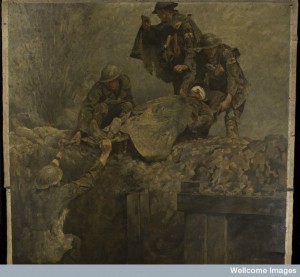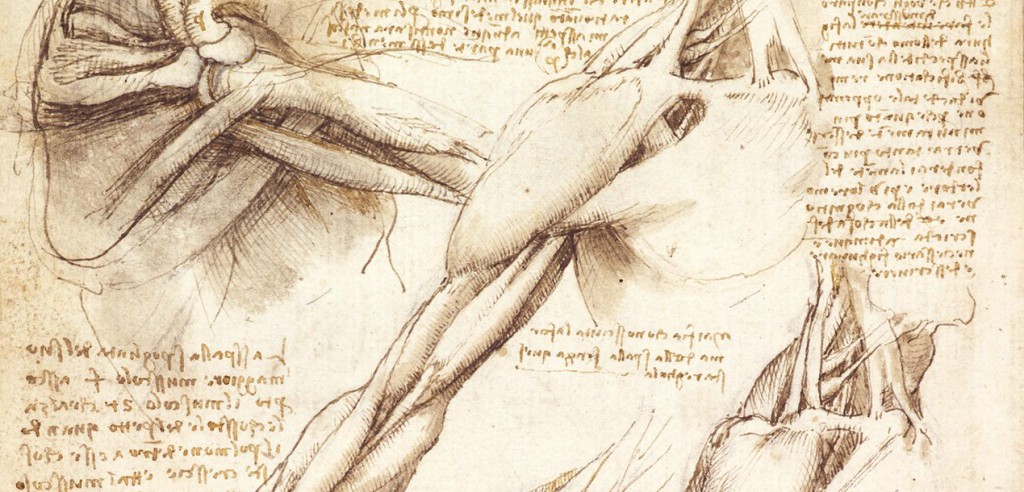
L0050213 World War I: stretcher bearers of the Royal Army Medical
Credit: Wellcome Library, London. Wellcome Images
images@wellcome.ac.uk
http://wellcomeimages.org
World War I: stretcher bearers of the Royal Army Medical Corps (RAMC) lifting a wounded man out of a trench. Painting by Gilbert Rogers.
Below, a trench in which a man stands lifting one end of a stretcher over the top of the trench. Above, three man receive the stretcher, on which lies a man with his face covered with a bloody bandage. Left, a shell explodes. The background is buff, the trench and the figures are predominantly grey, yellow and green, giving an impression of mud everywhere.
Of the men in the upper half, two have armbands with red crosses on a white ground, in addition to uniform badges with red crosses on, while the third, on the left, has only the red cross badge on his uniform, and no armband.
The body of the man on the stretcher is foreshortened to show the soles of his boots, a device also found in paintings by Mantegna, Borgianni, and Rembrandt.
1919 By: Gilbert RogersPublished: –
Copyrighted work available under Creative Commons Attribution only licence CC BY 4.0 http://creativecommons.org/licenses/by/4.0/
The imagine I have chosen is, World War I: stretcher bearers of the Royal Army Medical. I chose this image because of how powerful it is to me, and also because most medical advances have been an achievement of warfare. Throughout history almost every medical advance has been something that has come forth because of human’s capacity to kill each other with the most creative ways that we can think of at the time. But with all the evil, and torment that are associated with war there has been some good that has come out of it. Almost every major medical breakthrough that has been achieved by human beings has come about because of war. Through ways to treat trauma injuries, mental disorders, and infections, the cures have come because physicians and governments are looking for ways to save their fellow citizens from certain ravages of war. From the first medic/shaman that first treated injured soldiers in ancient battle fields in the near Middle East, to the advancement that we have today. The military has been the testing grounds for certain procedures, theories, and innovations of already existing techniques and equipment. For as long as there has been warfare, there has been men who try to help the wounded men heal. Most of humanity has benefited from all the medical discoveries that have been made through battle fields’ hospitals and research to treat those that have come home with physical and mental wounds.



